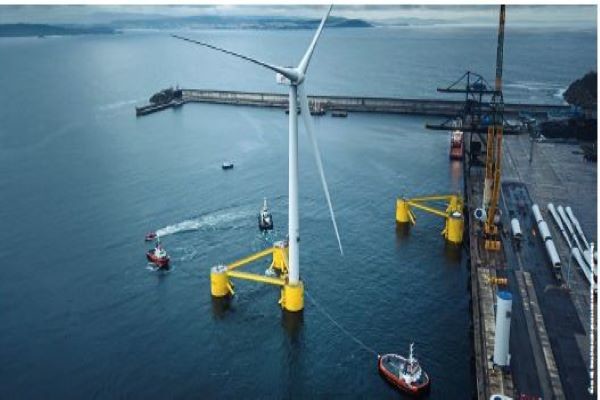The upcoming California lease auction is expected to see the US become a major floating offshore wind player. Given the US’s ambition to upscale its current offshore wind capacity from 42 MW to 30 GW by 2030, the market is primed for development. With higher winds further offshore and the resulting higher energy yield and improved capacity factor, two questions loom for the US floating wind market: how much potential exists, and how do marine risks compare to anticipated benefits?
In comparing floating to fixed offshore wind, the best choice is site-dependent: which technology best suits that location’s unique characteristics. For the West Coast, with a small continental shelf and deep-water depths beyond, floating is the more suitable technology.
Fixed and floating have many similarities. Wind turbine generator (WTG) technology is comparable. The electrical infrastructure is similar in operation and technology. Supporting vessels must contend with the Jones Act, though in different ways depending on the technology and methodology for transportation and installation (T&I) and operations and maintenance (O&M).
T&I for floating brings unique challenges. Integration of tower and WTG is completed quayside, then towed to site for hook-up, putting more onerous requirements on port infrastructure and comprising a weather-restricted tow with the integrated floating WTG. Floating subsea architecture means deep sea operations for mooring and cabling. Furthermore, locations further offshore mean longer transit times for vessels and more diverse weather and metocean profiles. Cable risks persist, though instead of worrying about a dragged anchor intercepting a cable, West Coast tectonic activity will be a factor. The associated risks, if not given advance consideration, will impact both short-term T&I and long-term O&M, playing into each site’s financial competitiveness.
California will soon be home to the first US commercial-scale floating wind farms; other deep-water locations along the coastal US will follow soon after. Initial risks will be high and there will be lessons to learn. Yet, this new technology is ripe for innovation, with the potential for impressive energy yields. With proper siting and risk management, floating will be the key to reaching the US offshore wind target.
